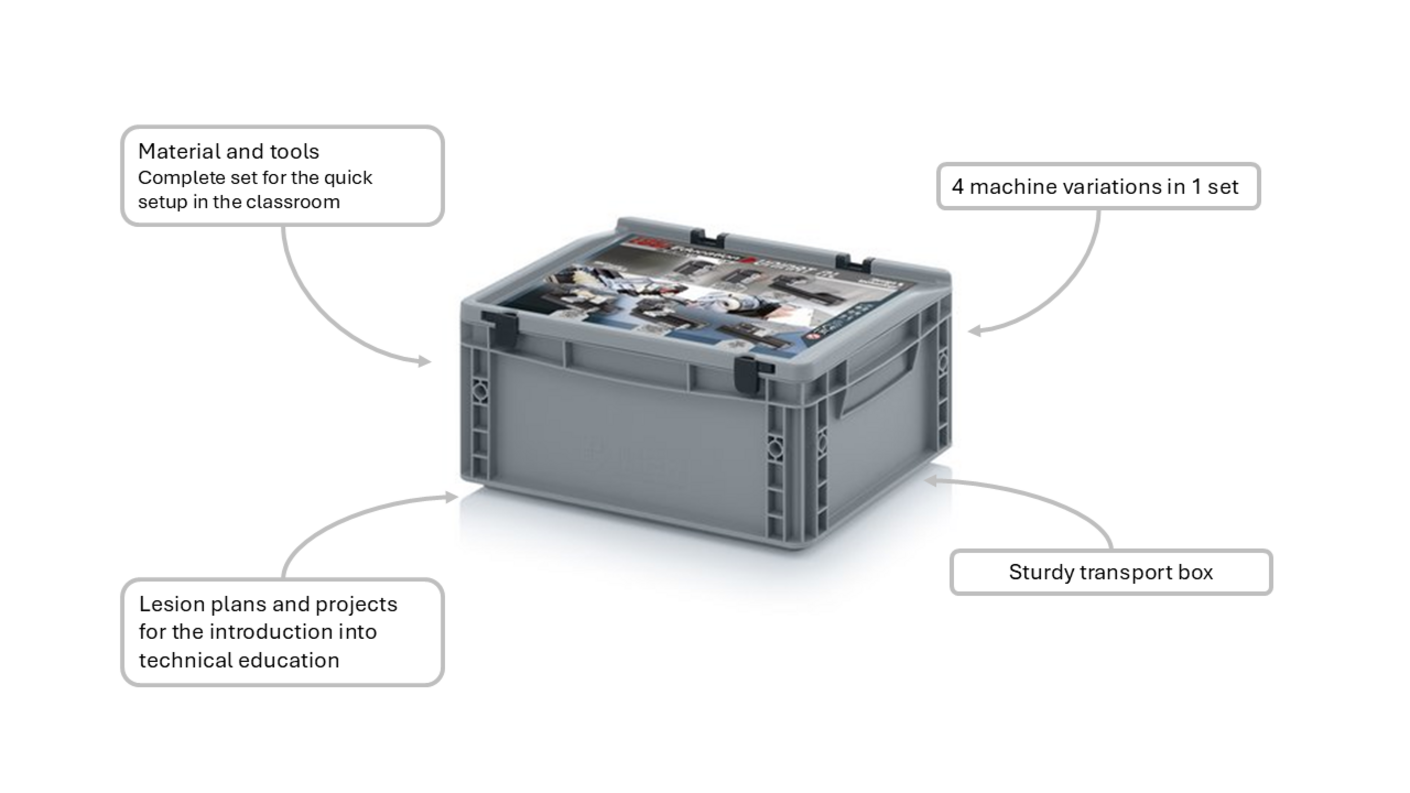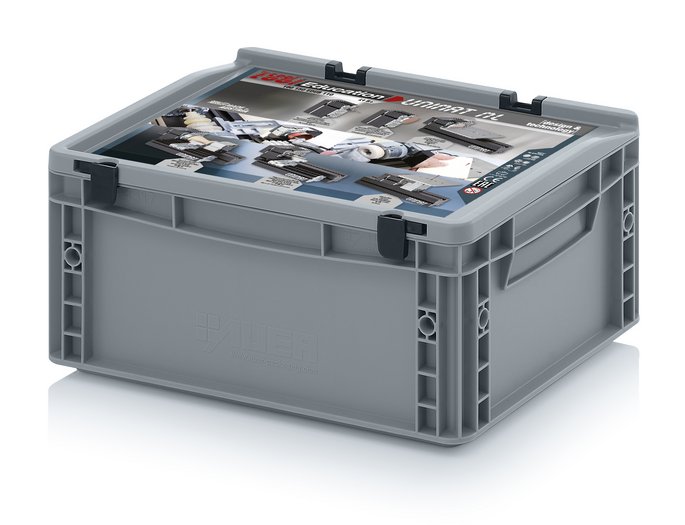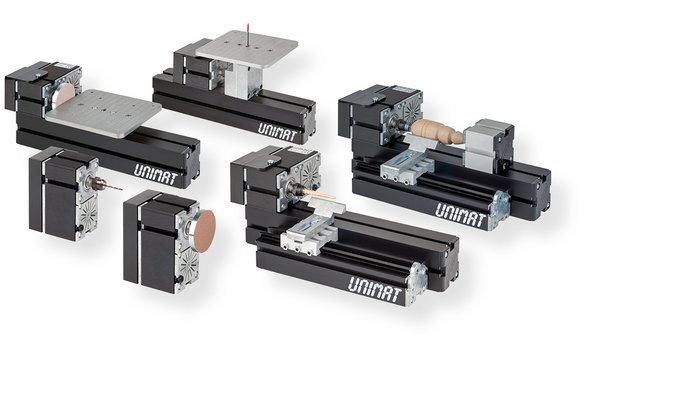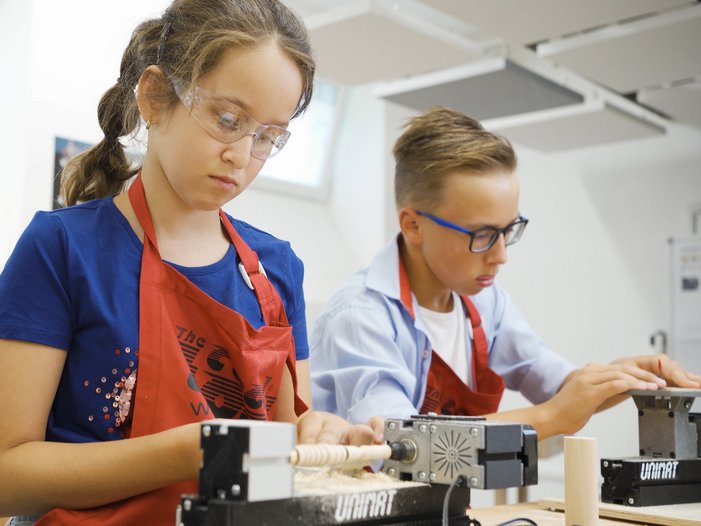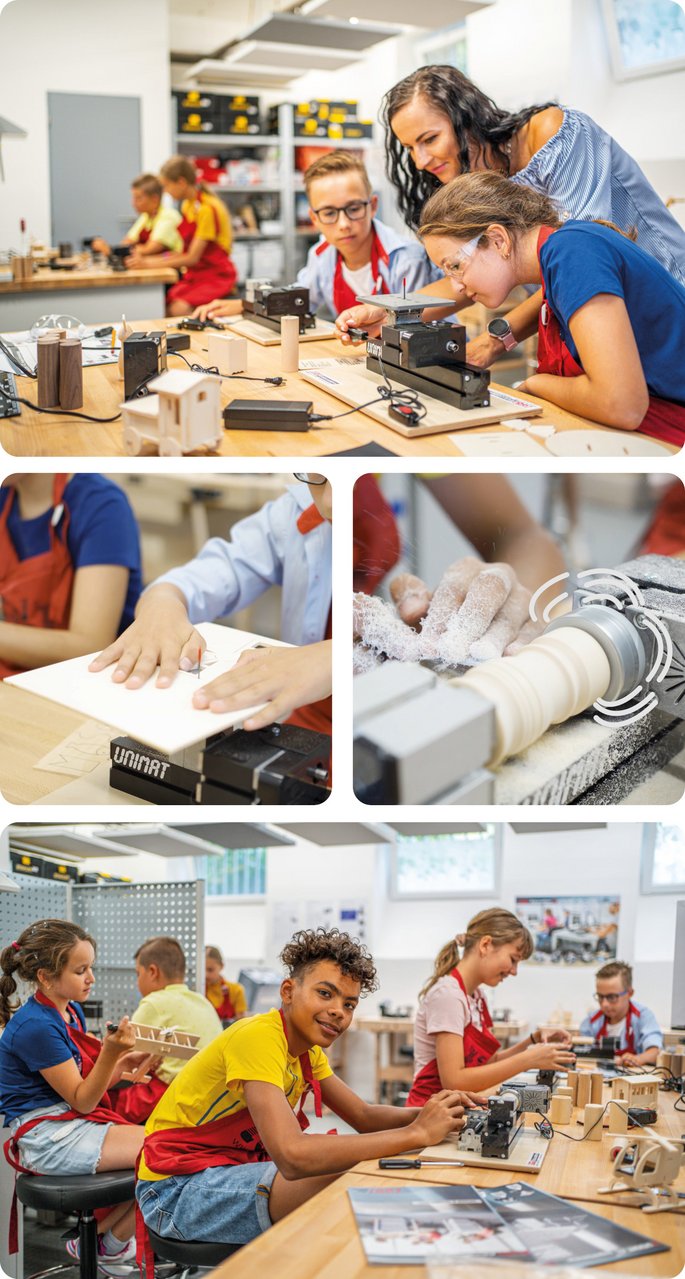
Unimat ML Design & Technology
160150EDUB
The UNIMAT Design and Technology Education Set is a child-safe, robust machine system in MetalLine construction – developed for intensive and long-term use, ideal for:
🏫 Student research centers
🧪 Makerspaces
🧰 Technical education in schools
🔧 Machine Options
The set allows the modular setup of the following machines:
- Jigsaw with child-safe short-stroke mechanism
- Lathe (various configurations, including 3-jaw chuck)
- Hand drill and handheld sander
- Stationary sander
🛡️ Safety & Precision
- The short-stroke technology of the jigsaw ensures that no injuries occur on contact with the skin – the skin simply vibrates with the blade.
- A precision metal guide with steel ram ensures clean cuts.
- Suitable materials include: plywood (up to 7 mm), balsa wood (up to 20 mm), plastics, and thin non-ferrous metals.
- No repositioning required when cutting internal shapes.
- Two saw blade thicknesses available.
📚 Educational Value
The set is universally suitable for technical and design education:
- 🪵 Project ideas can be quickly realized, such as wooden pens or solar models
- 🧠 Lesson plans available on machine handling and working processes
- 🧰 Teamwork – promotes collaborative group work
- 🎯 Skill development – teaches manual, technical, and creative abilities
The UNIMAT Design and Technology Education Set combines maximum safety, educational benefit, and hands-on application – perfect for creative and sustainable technical learning.
![[Translate to English:] UNIMAT Zertifikate und Awards](/fileadmin/_processed_/7/0/csm_zertifikate_d0ef3beb24.jpg)
Safety first!
Safety must always be the top priority when it comes to hands-on activities and technical education. The UNIMAT 1 jigsaw is specially designed so that the blade vibrates harmlessly upon contact with the skin — making injuries virtually impossible. This makes the UNIMAT 1 Elementary School Set the ideal solution for safe use in classrooms and workshops.
All UNIMAT machines are designed to be child-safe and pose no risk of injury. Even children as young as 8 years old can independently create their first projects using UNIMAT – safely, confidently, and with great success.
Quality as a Core Value!
For over 40 years, we have been producing precision machines with a clear focus on quality and functionality – both integral parts of our company philosophy. Our UNIMAT 1 machines operate just like full-sized woodworking machines, allowing students to develop a solid understanding of technical processes while building practical craftsmanship.
This hands-on learning approach fosters both technical knowledge and manual skills – making UNIMAT the perfect tool for education with lasting value.
Machine applications
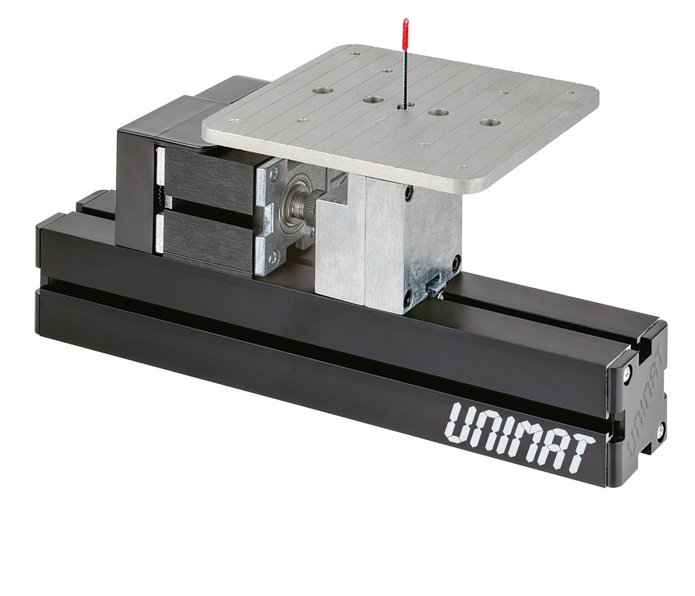
Jig Saw
The child-safe and powerful jigsaw allows for easy and quick sawing tasks. Its short stroke ensures that there's no risk of injury.
Fine work, similar to using a scroll saw, becomes quicker and more enjoyable.
The saw is suitable for plywood, solid wood up to 7mm, and balsa wood up to 20mm, working particularly well with 4mm poplar plywood.
Additionally, it eliminates the hassle of constantly having to remove and reinsert the jigsaw blade for cutting openings.
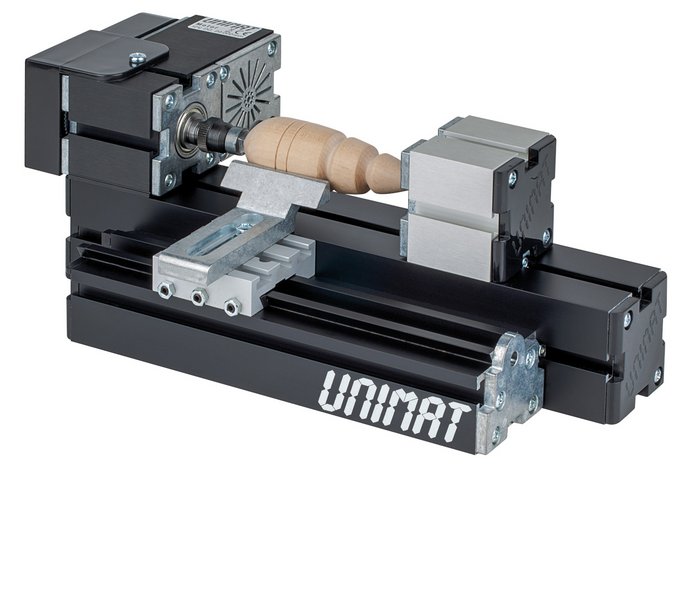
Wood lathe

Sanding machine
Safe sanding is ideal for giving your own workpieces the final touch or easily sharpening your own tools.
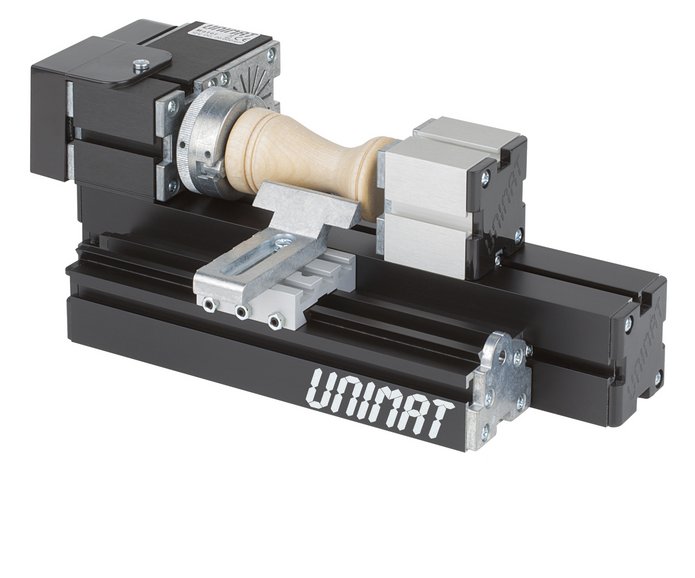
Wood lathe variations
Faceplate Turning: The work piece is clamped on only one side using the faceplate.
Miniature Lathe: Tiny rods of wood or soft metal (up to 6 mm Ø) can be clamped with collets
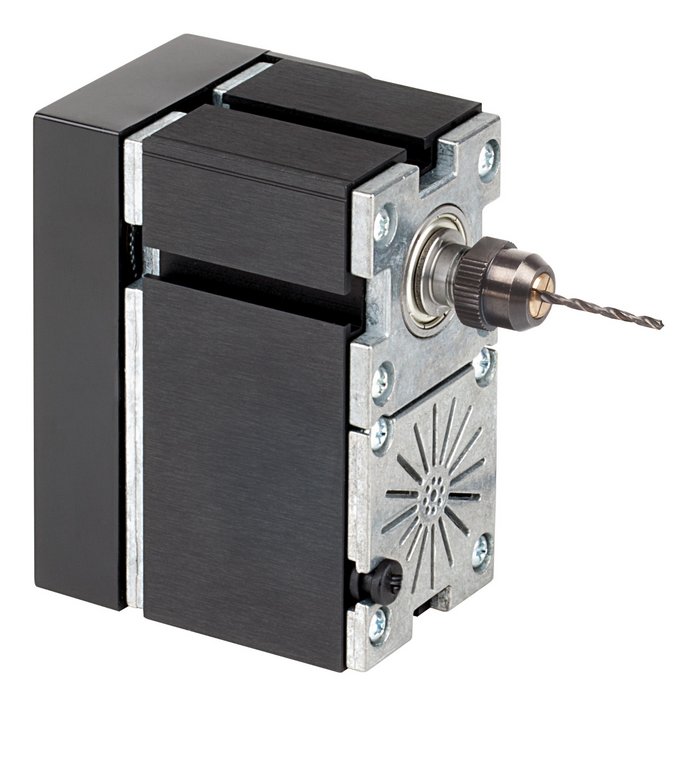
Hand drill
The drill allows for child-safe drilling in wood. The vibration of the drill bit ensures safety while still enabling the drilling of small holes.
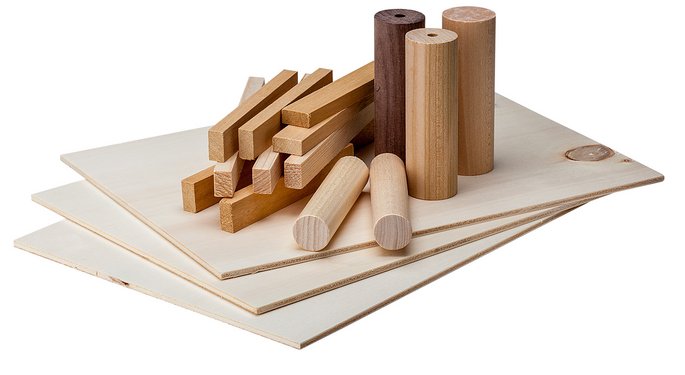
Working with wood
Working with Wood – Hands-On Learning with a Sustainable Material
Wood is a renewable, eco-friendly material that is ideal for technical education. Through hands-on work with wood, students gain a solid understanding of material properties while developing both practical craftsmanship and creative design skills.
Woodworking engages multiple senses, promotes concentration, fine motor skills, and spatial awareness, and offers a valuable counterbalance to today’s often abstract and digital learning environments. By realizing their own ideas, learners deepen their understanding of technical processes, materials, and creative problem-solving.
Wood-based projects in the classroom allow students to showcase their individual strengths and create meaningful learning experiences that boost confidence, motivation, and a sense of responsibility.
Unimat ML Design & Technology (160150EDUB)
| Included Components | |
|---|---|
| Modular All-Metal Construction for: | |
| • Lathe | |
| • Jigsaw | |
| • Sanding Machine | |
| • Hand Drill / Grinder | |
| Electrical & Drive | |
| • Safety Transformer 14V | |
| Lathe Accessories | |
| • 3-Jaw Chuck | |
| • Steel Faceplate | |
| • Live Centers | |
| • Adjustable Lathe Support (145 mm) | |
| Sawing & Sanding | |
| • ML Jigsaw | |
| • ML Saw Table | |
| • 10 Jigsaw Blades | |
| • 3 Medium Jigsaw Blades | |
| • Safety Goggles (Professional) | |
| Basic Equipment | |
| • Wooden Base Plate with Anti-Slip Surface | |
| • 2 Mini Clamps | |
| • Lathe Chisel | |
| • Tools | |
| Additional Items | |
| • Storage Box 1 | |
| • Educational Support Material |
Curriculum examples
Core curriculum primary school, levels 1-4, Art, Handicrafts, Textile Crafts, Hessen, Germany, p 22 ff.:
„The Subject Crafting integrates a wide range of subject areas for the active handling of materials like clay, wood, metal, stone, acrylics, etc. … Systematic training of processes – including the utilization of suitable tools – enables methodical working so that individual results with or without functional character emerge.“
Core curriculum "Economy, Work, Engineering" levels 5-10 engineering. Schleswig-Holstein, Germany. p 18.:
"Engineering is always connected with the aspect of realization. Therefore it describes the path from planning to execution or processing, from the idea or invention/reinvention to the work piece or process. The active utilization of various materials, tools and machines gives the opportunity to initiate others than purely cognitive learning processes by practical learning.“
